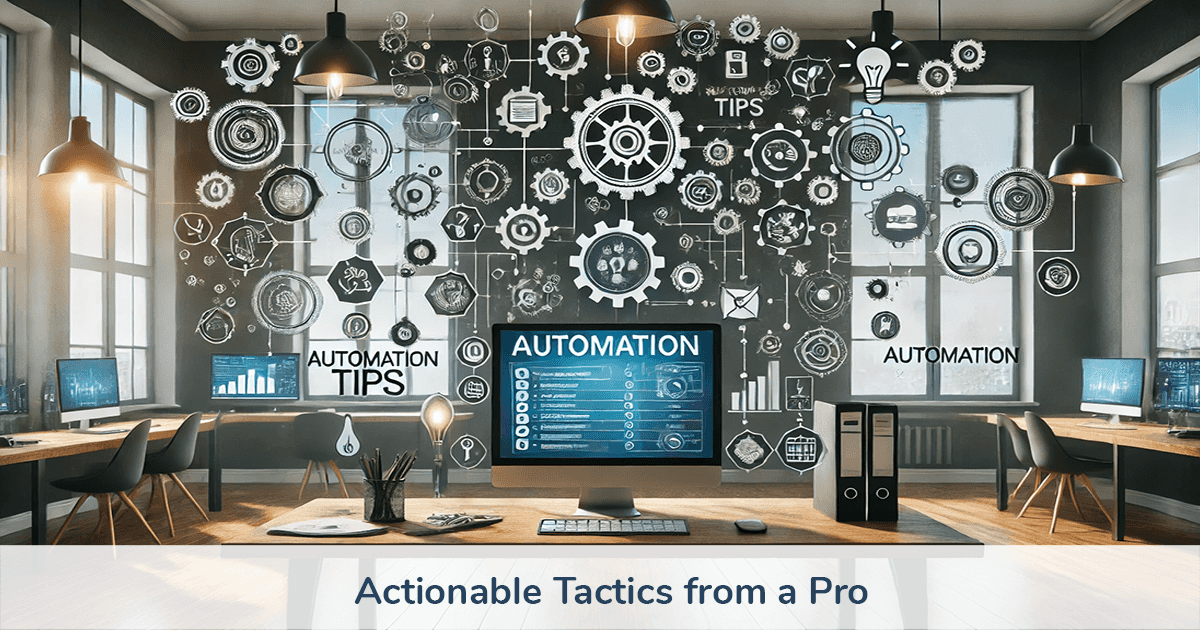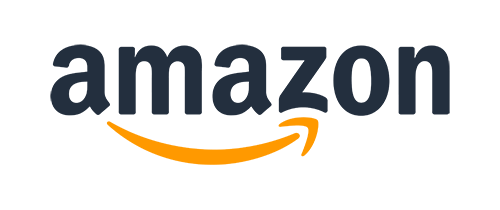
7 Shopify Automation Tips to Level Up Your Store
June 11, 2023
Updated: October 9th, 2024
These tips will save you time or improve your business. I know because I've used them on numerous Shopify stores.
I've been working in the Shopify eco system for 10+ years, ran a successful Shopify store for 7 years, and have done various consulting projects for Shopify stores.
Over the years I've tried a lot of apps and tactics for automating tasks and leveling up Shopify stores.
Here are my favorites! ✊
We create automation apps (like Order Automator Shopify app) and custom solutions. If you want something automated in your business, let us know.
Table of contents
💎 Automation Tip #1: Automate quality inbound traffic acquisition
This is #1 on the list because more quality traffic = more sales, and there is an awesome app I've used called Klickly that automates this process.
Klickly is a pay per performance system that drives traffic to your site with a guaranteed ROI 💸
It works like this:
-
Install the app and create an account
-
Create a campaign to include products you want to promote
-
Set your referral commission for conversions
-
Klickly will drive traffic to your site, and you only pay the commission if the visitor converts
You set a commission rate and Klickly creates ads using proprietary data and AI technology to drive customers to your site.
Worst case you pay $0 and get a bunch of free traffic. Awesome app that I've used with success on multiple stores.
💎 Automation Tip #2: Create an affiliate program to get backlinks and referral traffic
I think every brand should have an affiliate program. Here are some key benefits:
-
Get referral traffic with a guaranteed positive ROI
-
Get backlinks to increase your SEO power
-
Generate a buzz about your brand by having people talk about it and promote it
Some apps I like for referral programs for Shopify stores are Referral Candy and Refersion.
Bonus: Referral Candy also has a nice video showing how to set up a referral program on Shopify.
To get affiliate partners, create the program and set the commission rate (maybe start with 10% - 20%, later add higher tiers for high performing affiliates to incentivize more action), then search for blogs and holiday shopping lists in your niche and reach out to them telling them why you think they'd be a good fit, and invite them to join your affiliate program. For sites you think could be a really good opportunity, offer them a free product to test.
I also recommend putting your affiliate program application in your site footer. Over time, you'll get people randomly signing up and promoting you. The fun part is checking your backlink profile every once in awhile and seeing new backlinks from blogs, Youtube channels, etc, of your affiliates promoting you.
💡 Tip: Set up a post checkout feature to offer a reward to the customer for sharing with their friends. For example, a customer purchases on your site, then on the thank you page they can share a discount code with a friend, then if the friend buys, they get a reward (discount on next purchase, cash, etc). Both apps I recommended have this feature.
💎 Automation Tip #3: Get max value from customers and visitors with email flows
Email is an awesome marketing source because it has a high conversion rate and is free (other than the cost of your email marketing software).
My favorite email marketing app is Klaviyo.
You can set up automated flows to get sales on auto pilot.
Some example flows:
- If customer buys a product from Collection A, send an email to show them items from Collection B, or a matching / upsell item
- Email customers on their first purchase anniversary date with a discount code
- Abandoned cart emails to recovery lost sales
- Periodic emails to customers of certain products, to incentivize them to check out more designs (if someone buys a t-shirt, send have an email send to them a few months later with link to check out the newest t-shirt designs)
- First time visitor offer, 10% off. This gets you more sales + includes prospects into your email list
💡 Tip: Set up some flows yourself, then hire an email marketing expert to help dial in more automated flows + a create templates for one-time broadcasts that you can use to promote around special events (holidays, product launches, etc).
You can also automate product review requests, but I actually recommend a focused app for that, Judge.me is the best Shopify reviews app and has lots of bonus features.
💎 Automation Tip #4: Sell on other marketplaces
Expanding marketplaces is great, sometimes you get surprised and find real gems that significantly level up your business.
Depending on your niche you might have access to specialized marketplaces, but in general you can always start with the big ones like Amazon, Etsy, eBay.
I've used those 3, with Amazon being my favorite. If you're not selling on Amazon you're losing out on a lot of missed opportunities. Lots of people start their product searches on Amazon.
Another tactic I like is to generate sales automatically on Etsy using CedCommerce Etsy Integration app. This app will sync your products with Etsy, then when new Etsy orders come in they get created in Shopify, and updated in Etsy when you fulfill them in Shopify. 100% automated.
💎 Automation Tip #5: Automate order fulfillment
Getting a fulfillment partner is key to scaling your business. Even if you're established, it's worth exploring new options to optimize your fulfillment system.
My 2 favorite fulfillment services I've used are ShipBob and Amazon FBA.
Amazon FBA is great if you're selling on Amazon, you can use that inventory to fulfill orders on your Shopify store. Use Order Automator to automatically fulfill those orders, update tracking, and sync inventory.
The downside of Amazon FBA is that you might not be able to fulfill international orders, depending on your marketplace. That's why I like ShipBob in tandem with Amazon.
You could use only ShipBob, I'd say it depends on your sales volume. You might not want to keep lots of inventory in 2 separate locations. You could, for example, use Amazon for your domestic sales, then keep some inventory in ShipBob to automatically have them fulfill international orders.
Shopify Fulfillment Network is another option, though last I checked they have a minimum requirement of 10 shipments per day on average to be in the program.
💎 Automation Tip #6: Improve conversion rate with apps that improve page engagement
I used to do a lot of conversion rate optimization projects and experiments, some tactics I've used to improve product page engagement / conversion rate:
-
Show Instagram pics with people using the product
-
Create a bundling / cross sell system
-
Create a good product review system
I think Covet Pics has the best Instagram <> website integration.
Here's how I use Covet Pics to show Instagram pics on Shopify sites:
-
Use Covet Pics to sync / import Instagram posts using your IG mentions and common hashtags
-
Ask customers and affiliates / ambassadors to post pics and tag you
-
In Covet Pics, you'll see a feed of these posts, tag the products in these pictures (this is the non-automated part, I would just make it a weekly task)
-
Create a widget in Covet Pics that you place in your product page Shopify template. Now that widget will show any of that product that was tagged in Covet Pics.
-
Also create a page on your site called Instagram Shop, and use Covet Pics to show all tagged products there.
Having images of people using your products not only shows useful pictures of your product, but also increases conversion rate by showing "social proof" - people are more likely to buy something that they trust and see other people enjoying.
Another tactic I like to use is creating a bundling / upsell system. See an example here: treetribe.com/products/forest-camo-leggings, look for the "Complete your outfit" section.
That's a custom feature that my team built (contact us if you want a system like this built).
We create these types of cross sell / bundle plugins by designing a widget to show on the product page, then creating a system that automatically shows related or matching products (by either referencing urls from other collections, or creating a tag system).
The result is extra product views, more sales, higher conversion rate.
There are apps that do stuff like this, but in my experience the existing apps are either clunky to use or significantly affect page load speed. The system we built is right into the site, so no page load speed is affected, and we create the system to match your business needs exactly.
My other favorite product page conversion rate tactic is adding reviews. You probably already have a reviews app (if not make that priority #1 this week), but are you maximizing all you can with it? I've tried lots of review apps over the years and by far the best is Judge.me.
In addition to product reviews, they have a load of customizations and integration options. Use Judge.me to highlight your favorite reviews on your home page, share reviews on social media, incentivize users by offering a discount code, and explore their other options to level up your review game.
💎 Automation Tip #7: Use POD for merch, clothing, accessories
POD (Print on Demand) is a great way to add an automated system to increasing product sales and experimenting with new products.
Apps like Printful allow you to browse their catalogue of products, put your designs on them, integrate into your site, and then automatically create and fulfill them when customers order them.
Key benefits:
- No inventory or fulfillment, they handle it for you
- Just create designs and have new products on your site without any investment
- Experiment with new product types before investing in inventory purchasing and prototyping
The downside is that these products are a higher cost, so your margins are lower, but if your POD products start doing high volume, then you can look into buying in bulk or sourcing that product type from a mass producer, lowering your cost and lowering your risk, knowing you have proof of concept.
💎 Bonus tips
Some bonus tips that had a significant impact on my experience running a Shopify store for 7 years:
Bonus Tip 1: Hire a VA (Virtual Assistant) as soon as possible
Even if it's just for a couple hours per week. This will get you in the mindset of delegation, a key part of growing your idea into a full on business with a team.
You can browse Shopify Experts, look on Upwork.com, or ask around in business communities or meetups for recommendations.
I think the key to having a good VA relationship is creating good SOP's and hiring someone that has a good attitude and is willing to learn new tasks.
Some common VA tasks:
- Customer support
- Research
- Finding and reaching out to blogs / potential affiliate partners
- Managing store tasks
- Managing social media (I recommend hiring a dedicated social media person, but just starting out a general VA can help you ease your load)
Bonus Tip 2: Create a real brand and do cool things to create talking points
Some examples:
- Include a cause into your business (plant a tree on every sale, donate to charity every month, etc)
- Host events for your community (even if it's something like an online contest, where customers submit a fun photo using your product, winner gets $150)
- Hire someone to make cool or fun videos showcasing your product
- Be different, infuse your personality into your brand and marketing
By creating an experience that delights people and gets them talking about your brand, you'll get offline referrals. These are hard to quantity but they happen (just think about your own experience buying a product from a brand that a friend recommended).
You'll also get more reviews and social media mentions. All good stuff worthy of investing in.
Bonus Tip 3: Always be looking for places to automate task
This is the reason I created Order Automator a few years ago.
I was running a Shopify store and noticed there were tasks we had to do every day, that were easy but tedious. Being a developer, I built a custom app to automate 1 of those tasks (requesting fulfillment to Amazon FBA for Shopify orders). After seeing it save 10+ hours per month, I made it into a public Shopify app, built a team, and to this day continue to add new features to help Shopify stores.
You can see the key features of Order Automator in the Shopify app store (check the reviews to see how people use it) or on our home page.
With that idea mind, go through your business and write down all the tasks you and your team do on a regular basis, then ask yourself if technology can automate that. If yes, search for an app in Shopify, there's probably a solution. Time is money, so it doesn't really matter the cost of the app, as long as you're getting a positive ROI (calculated by increased sales, or hourly rate via time saved).
And if you can't find an existing solution, contact us to talk about building something for you. We have expert Shopify developers on our team that enjoy building solutions for you.
Bonus Tip 4: Try new apps
Key example, I recently installed and tested the Shopify app Zipchat. Wow. I immediately saw the value in providing detailed, instant answers to website visitors + cutting back on support requests.
By default I don't like chatbots, they rarely answer my question, and most are annoying. This one is different. Smarter. You give it information and / or let it crawl your store's website to "learn" all about your brand, policies, products, to knowledgably answer questions.
Diving into it more I recognize the upsell and cross sell value as well, this is the type of functionality that makes apps pay for themselves with gains on ROI. Nice.
Growing an online store is hard (I started and ran a brand for 7 years before exiting). Make it easier by routinely trying new apps to find opportunities to level up your store. Ask people, and apps you already use, for recommendations on what apps they like.
🧙♂️ If you liked this post please check out our apps Order Automator and Product Automator.
✅ They have a suite of tools to automate tasks + extend Shopify functionality, and they're FREE to try. Our mission is to help Shopify stores and the people that work in them save time and money.
 Author: Joe
Author: Joe










Any thoughts?